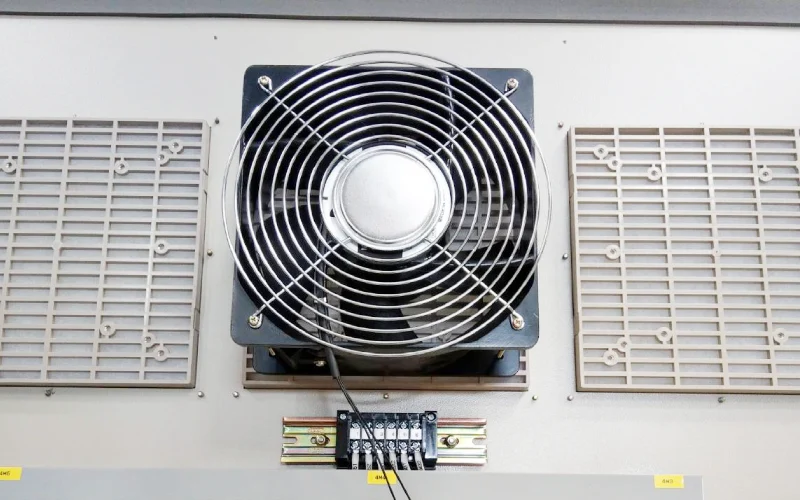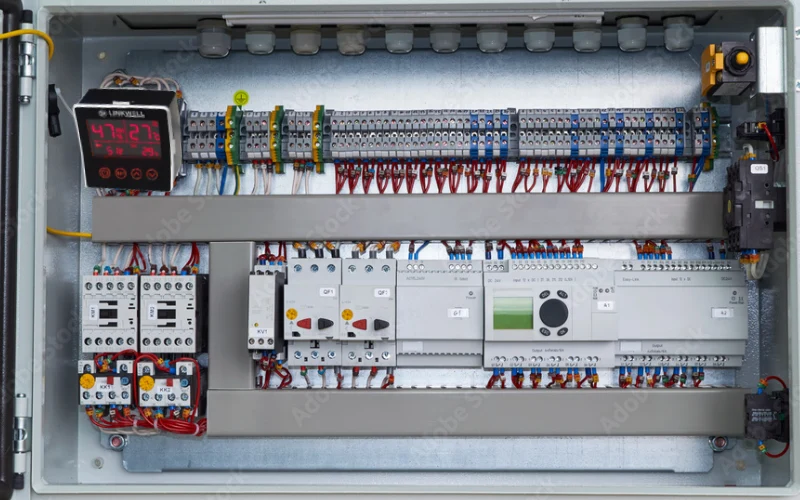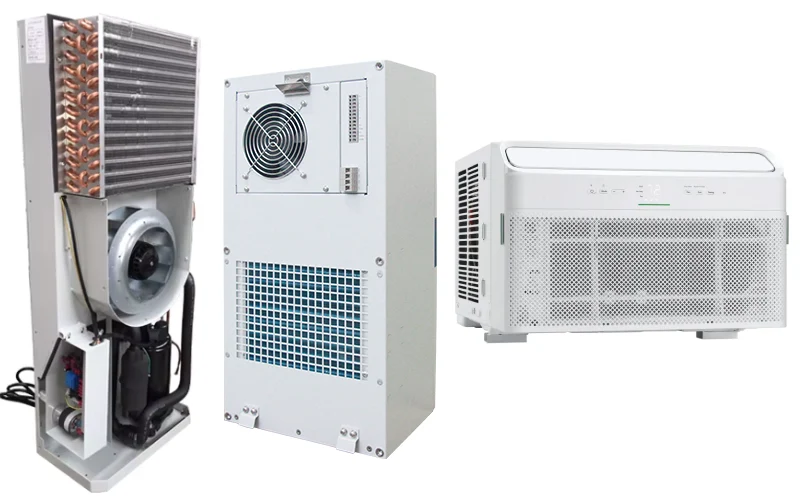If you have ever wondered what is variable speed fan, you are not alone. A variable-speed fan lets you control how fast the fan spins, so you can adjust airflow to match your needs. This matters whether you manage a busy office or just want a quieter home. You get more comfort, less noise, and your equipment lasts longer.
- You can save a lot of energy with a variable-speed fan:
- Stores report between 29% and 74% energy savings.
- Some systems use up to 50% less energy than regular fans.
- Field tests show savings as high as 94%.
Today, you see these fans everywhere—from smart homes to huge hospitals—because people want better efficiency and smarter technology. Linkwell brings you advanced variable-speed fan solutions built for both industry and daily life.
Key Takeaways
- Variable-speed fans allow you to control airflow, providing comfort and energy savings.
- Switching to a variable-speed fan can lead to energy savings of up to 74%, reducing your electricity bills.
- These fans operate quietly and adjust speed based on your needs, enhancing comfort in any environment.
- Using variable-speed fans protects your equipment by maintaining optimal temperatures and humidity levels.
- Investing in variable-speed fans offers long-term savings and efficiency, making them a smart choice for homes and businesses.
What is variable speed fan
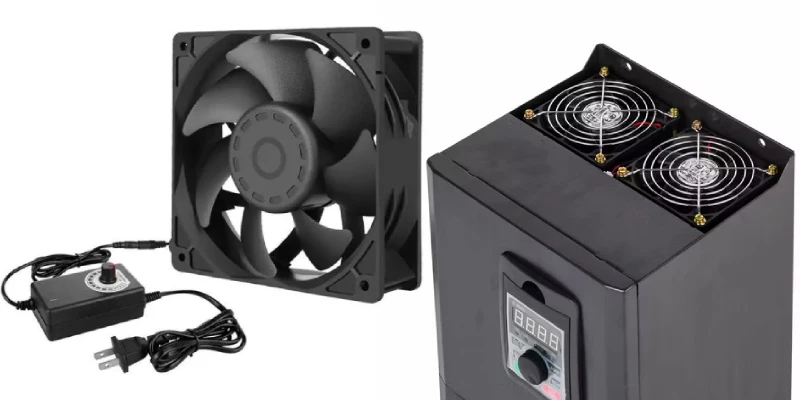
Basic concept
You might ask yourself, what is variable speed fan and why does it matter in your daily life or at work? A variable-speed fan gives you control over how fast the blades spin. You can adjust the airflow to match what you need at any moment. If you want a gentle breeze, you set it low. If your equipment heats up, you turn it higher. This flexibility makes a big difference in comfort and efficiency.
When you use a variable-speed fan, you get more than just air movement. You get smarter technology that responds to your environment. These fans use special motors and controls, like variable frequency drives, to change speed smoothly. You don’t have to settle for one setting. You can fine-tune the airflow, save energy, and keep things quieter.
Some people think variable-speed motors can’t work with zoning systems. That’s not true. You can use them with standard thermostat signals, so they fit right into modern setups. Another myth is that bypass dampers aren’t needed. Actually, bypass dampers help prevent overpressurization and keep your system running efficiently.
Comparison with standard fans
Let’s break down what is variable speed fan compared to a regular fan. Standard fans run at one speed. You flip the switch, and they go full blast. They don’t adjust to changes in temperature or demand. This can waste energy and create more noise than you want.
A variable-speed fan works differently. You can set it to multiple speeds, so it matches your needs. Here’s how they stack up:
| Fan Type | Energy Consumption | Airflow Regulation |
|---|---|---|
| Variable Speed | More efficient | Adjusts based on system needs |
| Standard | Less efficient | Operates at constant speed |
You get better energy savings with a variable-speed fan. It only uses as much power as needed. You also get improved airflow management. The fan can slow down or speed up depending on the cooling needs. This means less wasted electricity and a quieter environment.
Here’s a quick list to show how what is variable speed fan stands out:
- You can operate at different RPMs for flexible airflow.
- You see multi-RPM fan curves that show how speed affects airflow and pressure.
- You get enhanced energy efficiency because the fan adjusts to system requirements.
Variable-speed fans do need a bit more attention during installation. You have to check the drives and controls regularly. Standard fans are simpler to set up and maintain, but they don’t offer the same efficiency or adaptability. You might pay a little more upfront for a variable-speed fan, but you save money over time with lower energy bills.
If you want a fan that keeps up with your needs, what is variable speed fan gives you the answer. You get smarter control, better comfort, and real savings.
How it works
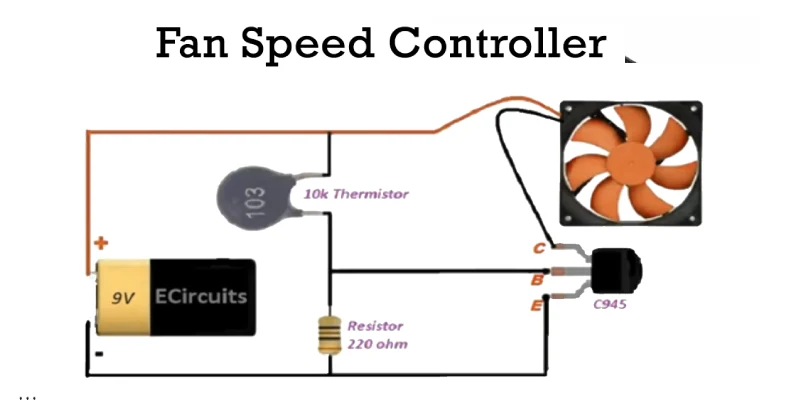
Variable-speed motor
When you look inside a variable speed fan, you find a variable-speed motor at its heart. This motor lets you change how fast the blades spin. You get to decide if you want a gentle breeze or a strong rush of air. The variable-speed motor responds quickly to your needs, so you always get the right amount of airflow.
Linkwell’s Axial Fan and Computer Chassis Fan both use advanced variable-speed motor technology. These motors do more than just spin the blades. They use smart controls to sense what your equipment needs. If your system heats up, the motor speeds up. If things cool down, it slows down. This keeps your equipment safe and saves energy.
Here’s a quick look at the advanced features Linkwell uses:
| Feature | Description |
|---|---|
| Control Modules | PWM, FG, and RD modules for intelligent fan management. |
| Functionality | Enables monitoring of fan speed, detection of rotation issues, and smart control for cooling demand. |
You get a fan that works only when needed. This means less wear and tear and a longer life for your equipment.
Speed control
Speed control is what makes a variable-speed motor so useful. You can adjust the speed to match exactly what your space or equipment needs. This isn’t just about comfort. It’s about efficiency and savings.
- You can set the fan to run at lower speeds most of the time, which uses less energy.
- The system makes small changes to speed, so you don’t waste power.
- You get better air quality and a more comfortable environment.
- The fan doesn’t have to turn on and off all the time. It just adjusts smoothly.
With Linkwell’s technology, you get precise control. The fan matches your cooling needs, whether you’re in a quiet office or a busy server room. You save energy, reduce noise, and protect your equipment—all thanks to the variable-speed motor.
Benefits
Energy savings
You want to save money and use less power. Variable speed fans make that easy. When you switch from standard fans, you see real drops in your electricity bills. These fans adjust their speed to match what your space needs, so you never waste energy. Take a look at the numbers:
| Metric | Value |
|---|---|
| Overall measured cooling season savings | 36% |
| Savings during summer peak billing hours | 41% |
| Median weather-normalized energy savings | 21% |
You get even more savings with advanced motors. A variable-speed motor running at half speed uses only 25% of the power to move the same amount of air. Many systems report up to 50% less energy use. That means you get better energy efficiency and a quicker return on investment—sometimes in just a couple of years. You also help the environment by lowering carbon emissions and supporting sustainability.
Comfort and noise
You want your space to feel good. Comfort matters at home, in the office, or in a busy server room. Variable speed fans keep the air just right. You control the airflow, so you never feel too hot or too cold. These fans also run quieter. They reduce tonal noise and lower sound pressure levels. You notice less humming and buzzing, which makes your environment more relaxing.
| Evidence Type | Findings | Implications |
|---|---|---|
| Tonal Noise Reduction | Reduction in tonal noise and overall sound pressure levels | Improved indoor comfort levels |
| Fan Design Impact | Changes in blade tip leading edge affect flow detachment and tonal noise | Enhanced acoustic comfort |
| Noise Detection | Flow Induced Noise Detection (FIND) identifies broadband noise sources | Better noise management in HVAC systems |
You get a peaceful workspace and better comfort for everyone. You can focus, relax, or sleep without distractions.
Equipment protection
You rely on your equipment every day. Variable speed fans protect your electronics and machinery by keeping temperatures and humidity in check. These fans adjust airflow based on cooling load, so your devices stay safe. ECM motors let fans respond quickly to changes, preventing overheating and mold. You avoid costly repairs and downtime.
- Fans optimize airflow for effective humidity control.
- Proper speed adjustments prevent high humidity and damage.
- Continuous monitoring allows early detection of issues.
- Predictive maintenance reduces unplanned downtime.
You get longer equipment life and fewer headaches. Your systems run smoothly, and you spend less on repairs.
Applications
Linkwell Axial Fan uses
You see Linkwell Axial Fans working hard in many places. These fans keep electrical cabinets cool, protect sensitive electronics, and help factories run smoothly. If you manage a telecom room or a power station, you know how important it is to control temperature and airflow. Axial Fans drop temperatures by up to 10°C, which keeps circuit breakers and control panels safe. You also get cleaner air and less dust in mining tunnels or sports arenas.
Here’s a quick look at where Axial Fans make a difference:
| Application Area | Performance Metrics |
|---|---|
| Cooling electronic equipment | 10°C drop in temperature observed |
| Agricultural setups | Efficient humidity and air quality control |
| Industrial processes | Effective pollutant removal |
| Refrigeration systems | Improved air circulation for heat exchange |
| Power generation | Enhanced cooling for steam turbine condensers |
| Mining and tunnel ventilation | Fresh air supply and dust removal |
| Exhaust fans | Effective air removal in kitchens and bathrooms |
| Sports arenas | Proper air circulation in large facilities |
| Wind tunnels | Simulation of wind conditions for testing |
You get more than just cooling. These fans run quietly, use less energy, and are easy to maintain. You spend less time worrying about overheating and more time focusing on your work.
Computer Chassis Fan in industry
You rely on Computer Chassis Fans to keep IT and telecom equipment running smoothly. These fans regulate airflow and keep temperatures stable inside server racks and switches. If you work in a data center, you know how important it is to prevent overheating. Chassis fans draw in cool air and push out hot air, which helps your systems stay reliable and reduces downtime.
- Chassis fans keep servers and switches cool.
- They help prevent overheating of critical components.
- Continuous airflow means fewer breakdowns and longer equipment life.
Variable speed fans in data centers offer targeted cooling. You can optimize airflow in hot spots, which lowers energy use and improves efficiency. These fans adjust speed based on demand, so you save money and reduce your carbon footprint. You also see fewer maintenance issues because the fans start gradually and run at optimal speeds.
| Advantage | Description |
|---|---|
| Energy Savings | Fans adjust speed to match cooling needs, cutting unnecessary energy use. |
| Improved Process Control | You get precise control over cooling in real time. |
| Increased Machine Life | Gradual starts reduce stress on motors, extending their lifespan. |
| Reduced Maintenance Issues | Less wear and tear means fewer repairs. |
| Enhanced Cooling Efficiency | Fans operate at the best speed for each situation, improving performance. |
You help your company save money, meet green standards, and keep your IT systems running without interruption.
You want a solution that saves energy, keeps your space comfortable, and protects your equipment. Variable speed fans do all that. They adjust to your cooling needs, lower your bills, and keep air moving smoothly. You avoid sudden temperature swings and enjoy a quieter environment. Linkwell’s Axial Fan and Computer Chassis Fan give you reliable performance for any project. Ready to upgrade? Explore more options on Linkwell’s website.
FAQ
How do you choose the right variable speed fan for your space?
You look at the size of your room or cabinet, airflow needs, and noise level. Check compatibility with your system. If you need help, Linkwell’s team can guide you.
Can you install a variable speed fan yourself?
Most fans come with easy-to-follow instructions. You can handle basic setups. For complex systems, you might want a professional to ensure safety and performance.
What maintenance does a variable speed fan need?
Tip: Clean the blades and replace filters regularly. Check the controls and wiring every few months. This keeps your fan running smoothly and extends its life.
Where can you use Linkwell’s variable speed solutions?
- Electrical cabinets
- Data centers
- Telecom rooms
- Industrial automation
You get reliable cooling and energy savings in all these places.

